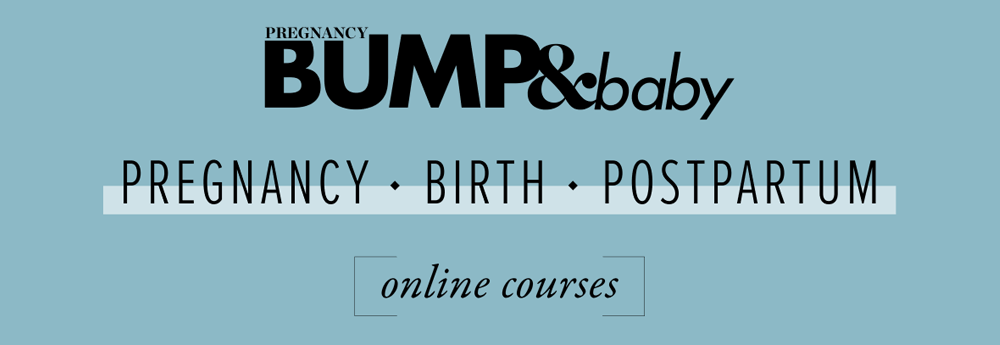
Whether you’re having a planned Caesarean or an unexpected one, it’s important to know what you’re in for, just in case, explains Tiffany Brown.
What is a C-section?
Answer: A Caesarean delivery (C-section) is the operation performed to extract a baby from its mother’s womb non-vaginally. C-sections have been performed for centuries and, contrary to popular opinion, are not probably named for Julius Caesar (the story is too long and complicated to recount here; suffice to say the earliest recorded mention of Caesarean deliveries predates the great emperor himself by several hundred years). The C-section operation involves making a surgical incision into the skin, abdomen, muscle and, finally, the uterus, to allow for delivery of the baby. The operation may be planned ahead of time, or may be required on an emergency basis once your labour has started.
Why would I need a C-section?
Answer: Various reasons may prompt a planned C-section. Your medical team may recommend the procedure due to complications during the pregnancy, like when the placenta is covering the cervix, otherwise known as placenta praevia. Expecting multiple babies often leads to a planned C-section due to one or more babies being in an abnormal position. If your baby is breech (positioned with their feet pointing downwards) or transverse (side or shoulder first), your midwife or obstetrician may well recommend a C-section delivery. C-sections may also be recommended if you have a mechanical obstruction (such as a large fibroid) obstructing the birth canal, or you may be advised to have a second C-section if you have had one previously. Likewise, pre-existing health conditions like complex heart problems, high blood pressure, or an infection that could be passed to your baby during delivery may bring a recommendation of C-section surgery. The advantage of a planned C-section is that you’ll be given an exact date for the operation, helping you to plan for the birth. Elective C-sections for non-medical reasons are becoming more popular, particularly for women who have had a previous C-section and therefore feel more familiar with this kind of birth. However, it is important to remember a C-section delivery is a major surgical procedure which requires significant medications and a recovery period, and which can impact your newborn’s first days, compromise breastfeeding success, and pose risks to you both. If it’s not medically necessary, a vaginal birth will almost always be safer than a C-section. Your medical team can give you more information on VBAC (vaginal birth after C-section), which is an option for many women.
A RECENT TRIAL SHOWED 60-80% OF WOMEN WHO HAD A PREVIOUS C-SECTION, AND WHO ATTEMPTED TO LABOUR NATURALLY WITH A SUBSEQUENT PREGNANCY, WERE ABLE TO HAVE A SUCCESSFUL VAGINAL DELIVERY.
Why would I need an emergency C-section?
Answer: An emergency C-section scenario may arise if your labour fails to progress despite you having strong contractions over a period of several hours or more. Fatigue and exhaustion will set in, putting both you and your baby at increased risk. Labour may be stalled due to your cervix not opening wide enough to let the baby descend, or your baby’s head may be too large. A stalled labour is the main reason for emergency C-sections. Concerns over the supply of oxygen to the baby may also give rise to the need for a C section procedure. During the early stages of labour, your baby’s heartbeat will be closely monitored. Sometimes changes in the heartbeat can mean interruption to the flow of oxygen. If a loop of umbilical cord emerges ahead of your baby, or if the cord is compressed by your uterus during contractions, an emergency C-section might be required.
How should I prepare for a planned C-section?
Answer: You’ll be given a date and time along with hospital details prior to your operation. You will probably need to have blood tests prior to your hospital stay, screening for your blood type and haemoglobin levels, just in case you need a transfusion during the procedure. You will be advised not to eat or drink anything from about midnight the night before your surgery, and to have a shower before you go to hospital to reduce the risk of infection. If your C-section is planned before 39 weeks gestation, you may need an amniocentesis to test for your baby’s lung maturity.
What can I expect to happen if I have a C-section?
Answer: If you’re having a planned C-section, you will check in to hospital at the organised time and be prepped for the surgery. Your tummy will be cleansed and a catheter, or tube, will be placed into your bladder to collect urine. IV lines will be placed into your arm or hand to give you intravenous fluids or medication. Usually a planned C-section will be performed with an epidural, a combined spinal epidural (CSE), or a spinal anaesthetic. These medications numb the lower part of your body but allow you to remain awake during the procedure. It’s normal to experience “pushing and pulling” sensations, but you won’t feel any pain. You will be allowed to have support person with you during the operation, and this person will be provided with theatre clothes. If your C-section is an emergency procedure, it’s more likely you’ll be put under with a general anaesthetic, and your support person will be asked to leave the theatre. The operation typically takes around 3-4 hours. First, an incision is made in your abdominal wall. This is usually made horizontally near the pubic hairline, and is called a bikini incision. (That’s right: If you have a run-of-the-mill C-section without complications, no one will be able to tell when you’re back in your bikini.) If a larger incision is needed or if the baby needs to be delivered immediately, a vertical incision may be required from just below your tummy button to just above the pubic bone.
The next step in the procedure is to make a uterine incision. Again, this is usually made horizontally across the lower part of the uterus, referred to as a low transverse incision. Finally, the baby is delivered through these incisions. The obstetrician will clear your baby’s mouth and nose of fluids, then clamp and cut the umbilical cord. The placenta is then removed and the incisions stitched up. You will be encouraged to give your baby skin-to-skin contact right away after delivery, as long as baby is well. Skin-to-skin regulates body temperature, calms your baby, and regulates breathing, heart rate, and blood sugar levels. It also encourages production of oxytocin, the hormone that helps your breast milk flow, to get breastfeeding established. If you have had a general anaesthetic and are unable to give your baby skin-toskin, your partner or support person may fill in for you.
What happens after the surgery?
Answer: The typical hospital stay after C-section surgery is 3-5 days. As the anaesthesia wears off, pain may interfere with oxytocin production, so it’s important to manage your pain to allow for successful breastfeeding. You may be given pain relief via a self-dosing pump through your IV drip. Midwives will be available to help you with breastfeeding, and you can begin as soon as you feel up to it. Post-surgery medications will be prescribed with breastfeeding in mind. Soon after the operation, you’ll be encouraged to move and walk around in order to speed up recovery, prevent constipation, and avoid blood clots. Your incision site will be monitored for any signs of post-operative infection. Your fluid intake, bladder and bowel function will also be monitored.
Want to know more?
6-step method to a quick recovery.
BUMP&baby
BUMP & baby is New Zealand’s only magazine for pregnancy and early babyhood. Our team of mums and mums-to-be understand what it’s like to be pregnant in this connected age, and that’s why BUMP & Baby online is geared toward what pregnant women and new mums really want to know.
Other articles of interest
Bambino Miosolo All-in-One Reusable Nappy
You may not know this, but you’re supposed to flush poo down the toilet even when you use disposable nappies, not bundle it up with the nappy to throw away.







